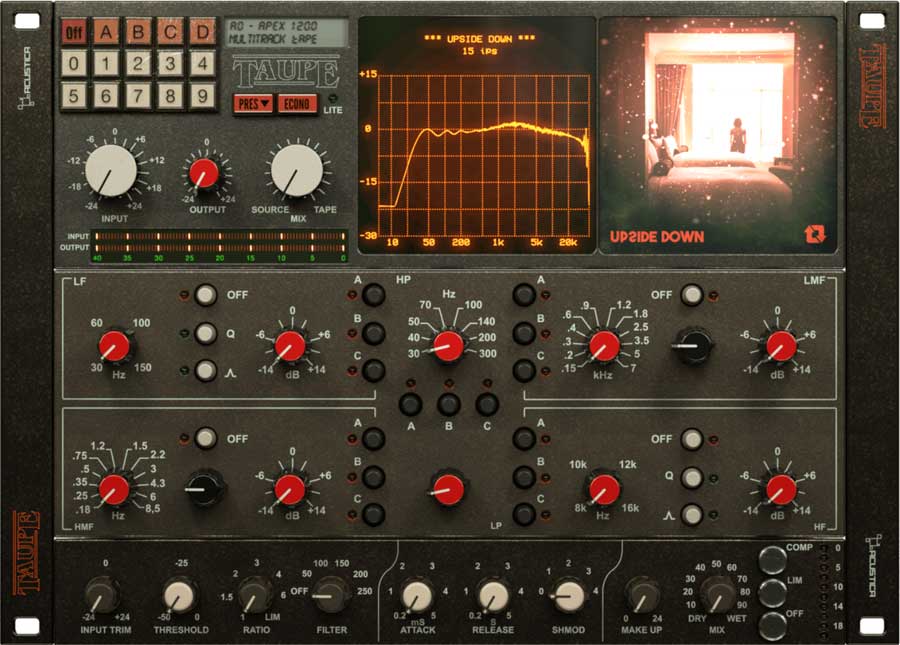
Inofficial: The tape collection with some EQs/compressors thrown in the mix.
EQ A - MCI JH-500
EQ B - MCI JH-600
EQ C - Studer 900
0 - Ampex MM1200, 15 IPS mono (great for rock and pop music)
1 - Ampex MM1200, 30 IPS mono (great for rock and pop music)
2 - Ampex 351, 15 IPS Stereo (tube pre, no tape)
3 - Ampex 351, 30 IPS Stereo (tube pre, no tape)
4 - EMI TR-50, Stereo 15 IPS
5 - EMI TR-50, Dual Mono 15 IPS
6 - EMI TR-50, Stereo 30 IPS
7 - EMI TR-50, dual mono 30 IPS
8 - MCI JH-110, Stereo 15 IPS
9 - MCI JH-110, Stereo 30 IPS
Group B
0 - MCI JH-110, Dual Mono at 15 IPS
1 - MCI JH-110, Dual Mono at 30 IPS
2 - MCI JH-24, mono at 15 IPS (useful on rap, dance and club music)
3 - MCI JH-24, mono at 30 IPS (useful on rap, dance and club music)
4 - MCI JH-110 (8 track), mono at 15 IPS (NAB)
5 - MCI JH-110 (8 track), mono at 15 IPS (IEC)
6 - MCI JH-110 (8 track), mono at 30 IPS (IEC)
7 - Otari MTR-90, mono at 15 IPS (go to for pop and R&B genres)
8 - Otari MTR-90, mono at 30 IPS (go to for pop and R&B genres)
9 - Otari MTR-100, mono at 15 IPS
Group C
0 - Otari MTR-100, mono at 30 IPS
1 - Studer A820, stereo at 15 IPS (C1 to C4 are great all around mix down choices)
2 - Studer A820, stereo at 30 IPS
3 - Studer A820, dual mono at 15 IPS
4 - Studer A820, dual mono at 30 IPS
5 - Soundcraft Saturn 824, mono at 15 IPS
6 - Soundcraft Saturn 824, mono at 30 IPS
7 - ReVox A77, stereo at 7.5 IPS (IEC)
8 - ReVox A77, dual mono at 7.5 IPS (IEC)
9 - ReVox A77, dual mono at 7.5 IPS (NAB) (lots of home studio musicians used A77 machines over the years)
Group D
0 - ReVox A700, dual mono at 15 IPS (semi pro tape machine of choice)
1 - ReVox PR900, stereo at 15 IPS
2 - Nagra IV, stereo (no speed given)
3 - Aiwa AD-F850, stereo cassette
4 - Aiwa Excelia XK-009, stereo cassette (perhaps the best cassette machine ever made)
5 - TEAC A-860, stereo cassette
6 - Wollensak (3M), stereo cassette deck. (No tape)
7 - AKAI 1710 (reel to reel, no tape)
8 - Sony PCM-7040 (digital, no tape)
9 - Alesis ADAT-XT20 (20-bit digital, no tape)
Pro tip: Click the ECONO button to preserve transients. This is very useful on electronic mixes.



